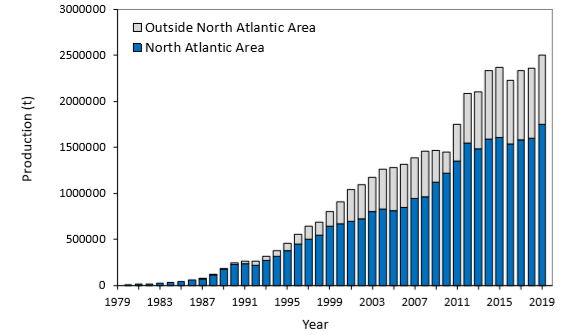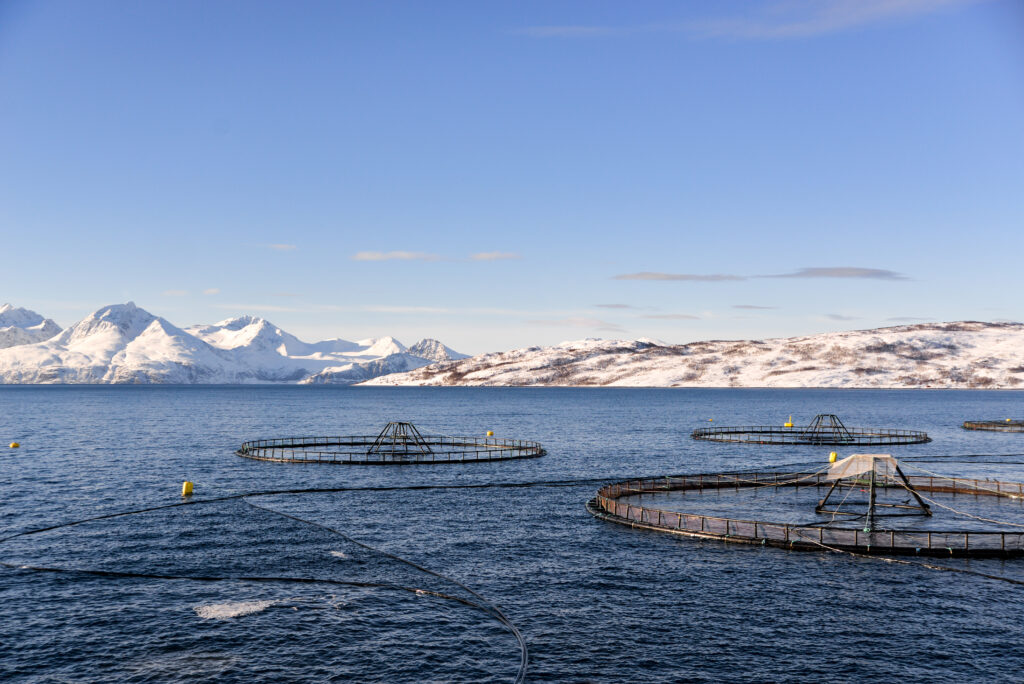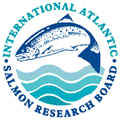Aquaculture and Related Activities
Aquaculture
While fish farming, or aquaculture, has resulted in an abundance of salmon on supermarket shelves, it has not come without cost to wild populations. One impact of salmon farming is that it increases the abundance of sea lice in the marine environment, to the extent that it has a negative impact on wild salmon populations. The graph below shows worldwide production of farmed Atlantic salmon, 1980 to 2019.

And timing can be everything, with salmon particularly vulnerable when they first leave their home rivers and head to sea. In an already challenging marine environment, the additional burden of a sea-lice infestation can greatly reduce the chances of survival. It is also recognised that large numbers of domesticated salmon escape from fish farms each year, with escapees observed in rivers in all regions where salmon farming occurs. For wild salmon, this causes increased competition for resources and may result in a wild fish spawning with a farmed one, compromising the genetic ‘fitness’ of wild populations. The latter is important because salmon populations need good genetic diversity to ensure that they are as resilient as possible to any future pressures they may experience.
So, what to do? Careful siting of fish farms away from wild salmon migration routes, state-of-the-art containment at sea, use of sterile fish, sea lice and disease management systems can all help. A further option is the development of closed-containment salmon production systems at sea or on land as an alternative method of fish farming. Such a system of aquaculture would give fish farmers complete control of the rearing environment and minimise the environmental impact of their activities on wild fish.

Introductions and Transfers
There are risks associated with movements of salmonids. These risks have been highlighted by the spread of the parasite Gyrodactylus salaris which has caused very serious problems in some parts of the North-East Atlantic Commission area following its inadvertent introduction from the Baltic Sea.
Resolutions, Agreements & Guidelines
- Explanations of Terms Used in the Guidance on Best Management Practices to Address Impacts of Sea Lice and Escaped Farmed Salmon on Wild Salmon Stocks (2010)
- ‘Guidance on Best Management Practices to Address Impacts of Sea Lice and Escaped Farmed Salmon on Wild Salmon Stocks‘ (2009)
- NASCO’s ‘Williamsburg Resolution’ is designed to minimise impacts of aquaculture, introductions and transfers and transgenics on the wild stocks (2006)
- Memorandum of Understanding between Canada and the US on Introductions and Transfers (NAC(05)7)
- ‘Road Map’ to enhance information exchange and cooperation on monitoring, research and measures to prevent the spread of G. salaris and eradicate it if introduced (NEA(18)08)
- Protocols for the Introduction and Transfer of Salmonids (NAC(92)24).
Publications
- Report of the 2016 Theme-based Special Session: Addressing impacts of salmon farming on wild Atlantic salmon: Challenges to, and developments supporting, achievement of NASCO’s international goals
- Report of the 2005 ICES/NASCO Symposium on Interactions between aquaculture and wild stocks of Atlantic salmon and other diadromous fish species: science and management, challenges and solutions.
